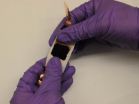(Press-News.org) The pelvic exam, a standard part of a woman's gynecologic checkup, frequently is performed for reasons that are medically unjustified, according to the authors of a UCSF study that may lay the groundwork for future changes to medical practice.
The research shows that many physicians mistakenly believe the exam is important in screening for ovarian cancer. The study, which surveyed obstetricians and gynecologists around the country, also shows that doctors continue to perform the exam in part because women have come to expect it.
The article is currently published online in the American Journal of Obstetrics and Gynecology.
The pelvic examination has been the foundation of the annual checkup for women for many decades, yet very little has been known about why clinicians perform it and if they believe it is useful,'' said senior author George Sawaya, MD, a UCSF professor of obstetrics, gynecology and reproductive sciences, and epidemiology and biostatistics. "We set out to better understand their practices and beliefs.''
Well-woman annual medical checkups generally are recommended because they allow physicians to assess overall health and pinpoint potential problems early. Traditionally, these have included, among other assessments, a manual inspection of a woman's cervix and uterus and a Pap smear.
Under updated preventive care guidelines by the American Cancer Society, the American Congress of Obstetricians and Gynecologists (ACOG), and the U.S. Preventive Services Task Force, most women no longer need annual Pap smears, which screen for cervical cancer. Now, questions are being raised by the medical community about the necessity of the annual pelvic exam for women with no gynecologic problems such as pelvic pain or unscheduled bleeding.
"The bimanual pelvic exam is not recommended for ovarian cancer screening, so we wondered under what circumstances the exam is being performed and why,'' said lead author Jillian T. Henderson, PhD, MPH, who performed the research while based at UCSF. She is now at the Kaiser Permanente Center for Health Research in Portland, Oregon.
The study consisted of a nationwide survey of 521 practicing physicians specializing in obstetrics and gynecology, or gynecology alone. The doctors were asked to indicate whether they would perform a bimanual pelvic exam in vignettes of female patients aged 18, 35, 55, and 70 years who had no symptoms of gynecologic diseases and did not require a Pap test. The study centered on the bimanual exam, not other components of a pelvic checkup such as a speculum exam and visual inspection of external genitalia which are often performed.
The researchers found that nearly all the physicians surveyed routinely would conduct the exam in asymptomatic, low-risk women. Furthermore, most of the doctors said they would perform the exam on a 55-year-old woman with no ovaries, uterus or cervix – and more than half considered such an exam to be very important for that woman.
Some 87 percent of the physicians said they would perform the exam on healthy 18-year-olds. ACOG recently recommended the exam not begin routinely until age 21.
Altogether, nearly half the physicians erroneously believe the exam is very important in screening for ovarian cancer, despite longstanding recommendations discouraging its use for this purpose.
Notably, many doctors said they conduct the exam in part for non-clinical reasons: because it reassures patients, because patients expect it, because it ensures adequate compensation for routine gynecologic care.
There were clear geographic patterns: doctors in the northeast and the south were more likely to consider the exams very important and to believe they "reassure patients of their health.''
The researchers said their study shows a need to educate doctors about the appropriateness of the exam, especially to clarify its role in ovarian cancer screening. The study also should prompt a closer look at the evidence that supports the exam's usefulness for the reasons cited by surveyed physicians, they said.
"These exams could result in unnecessary surgeries or women being falsely reassured,'' Henderson said. "We need to have more discussion over whether the benefits of these exams outweigh the harms, and if they should be part of a woman's annual checkup.''
INFORMATION:
UCSF co-authors are Cynthia C. Harper, PhD, and Jocelyn Chapman, MD, of the Department of Obstetrics, Gynecology and Reproductive Sciences; and Sarah Gutin, MPH, of the UCSF School of Nursing's Department of Community Health Systems.
Funding for the study was provided by a grant from the UCSF Mt. Zion Health Foundation; the Mentored Research Scientist Development Award in Population Research (K01HD054495); and resources from the NIH/NCRR/OD UCSF-CTSI program (KL2RR024130).
UCSF is a leading university dedicated to promoting health worldwide through advanced biomedical research, graduate-level education in the life sciences and health professions, and excellence in patient care.
Follow UCSF
UCSF.edu | Facebook.com/ucsf | Twitter.com/ucsf | YouTube.com/ucsf
Study questions reasons for routine pelvic exams
2012-12-15
ELSE PRESS RELEASES FROM THIS DATE:
New findings on killer bacteria's defence
2012-12-15
Antibodies are key to the recognition and neutralisation of bacteria by our immune system. The most common antibodies have the shape of a Y, and the two prongs fasten to molecules that belong to the bacteria. The cells in the immune system recognise the shaft and can then attack the bacteria.
Since the 1960s, it has been known that certain bacteria have developed the ability to turn these antibodies around, which makes it more difficult for the immune system to identify them. These include streptococcus bacteria, sometimes referred to as 'killer bacteria', that cause ...
More casinos does not mean more gamblers
2012-12-15
Memo to casino operators: just because you build it doesn't mean they will come.
A new study out of the University of Iowa examined how casino growth in the state has influenced gambling by residents. The survey suggests that fewer Iowans gambled overall and also that fewer people have become addicted to gambling despite a recent spurt in gaming facilities. Casino gambling was introduced in Iowa in 1991. There are currently 21 casinos in Iowa, all but three licensed by the state. (The others are owned and operated by Native American tribes.)
The findings could affect ...
Doing the right thing when things go wrong
2012-12-15
ANN ARBOR, Mich. — The University of Michigan Health System doesn't claim to be perfect. But its response to medical errors, near-misses, unexpected clinical problems and unintended outcomes is a model for the nation that other hospitals can and should copy, according to a new paper in a prestigious health care journal.
The "Michigan Model" for handling these situations, and preventing them from happening again, has not only helped patients and medical staff alike – it has also helped UMHS go against the grain of the costly, combative "deny and defend" medical malpractice ...
Stretchable electronics
2012-12-15
Electronic devices become smaller, lighter, faster and more powerful with each passing year. Currently, however, electronics such as cell phones, tablets, laptops, etc., are rigid. But what if they could be made bendable or stretchy?
According to the University of Delaware's Bingqing Wei, stretchable electronics are the future of mobile electronics, leading giants such as IBM, Sony and Nokia to incorporate the technology into their products.
Beyond traditional electronics, potential stretchable applications include biomedical, wearable, portable and sensory devices, ...
Drug to treat opioid addiction poses risks for accidental exposure to children
2012-12-15
(SALT LAKE CITY)—Buprenorphine is a safe and effective drug for treating opioid addiction. But as the prescribed use of buprenorphine has dramatically increased in recent years, accidental exposure of children to the drug has risen sharply, placing them at risk for serious injury and in extremely rare cases even death, according to researchers at the Utah Poison Control Center (UPCC), U School of Medicine's Department of Family and Preventive Health, and the Utah Department of Health (UDOH).
In a study published Thursday, Dec. 13, 2012, by the U.S. Centers for Disease ...
NASA sees Tropical Cyclone Evan batter and drench Samoan Islands
2012-12-15
NASA's Tropical Rainfall Measuring Mission or TRMM satellite continues to provide rainfall and cloud height data on powerful Cyclone Evan as it crawls through the Samoan Islands with hurricane-force winds and heavy rains. NASA's TRMM satellite identified "hot towers" in the storm, hinting that it would continue to intensify.
On Dec. 14, American Samoa, Tonga and Fiji are all under warnings or alerts as Evan continues to move west. A gale warning is in effect for Tutuila and Aunuu. A high surf warning is in effect for all of American Samoa. A flash flood watch is in effect ...
In decision-making, it might be worth trusting your gut
2012-12-15
Turns out the trope is true: You should trust your gut -- as long as you're an expert. So says a new study from researchers at Rice University, George Mason University and Boston College.
"How expert someone is within a particular domain has a positive impact on their ability to make an accurate gut decision," said Rice's Erik Dane, lead author of a study published last month in the journal Organizational Behavior and Human Decision Processes. However, he added, "Even if you're an expert, intuitive decision-making is better for some types of tasks than others. Tasks that ...
Dreidel-like dislocations lead to remarkable properties
2012-12-15
HOUSTON – (Dec. 14, 2012) – A new material structure predicted at Rice University offers the tantalizing possibility of a signal path smaller than the nanowires for advanced electronics now under development at Rice and elsewhere.
Theoretical physicist Boris Yakobson and postdoctoral fellow Xiaolong Zou were investigating the atomic-scale properties of two-dimensional materials when they found to their surprise that a particular formation, a grain boundary in metal disulfides, creates a metallic – and therefore conducting – path only a fraction of a nanometer wide.
That's ...
We're all living longer, but longevity increases not benefitting everybody
2012-12-15
TORONTO, ON – Global lifespans have risen dramatically in the past 40 years, but the increased life expectancy is not benefitting everybody equally, say University of Toronto researchers. In particular, adult males from low- and middle-income countries are losing ground.
People are living longer on average than they were in 1970, and those extra years of life are being achieved at lower cost, the researchers, led by U of T Chemical Engineering PhD candidate Ryan Hum, say in a paper published in the open access science journal eLife this month.
However, the costs for ...
The HER2 paradox: HER2-positive stem cells found in HER2-negative breast cancer
2012-12-15
(SACRAMENTO, Calif.) — A multicenter study led by researchers at UC Davis describes new, paradoxical characteristics of the most common type of breast cancer. The findings shed light on how the disease can evade treatment and could improve diagnosis and treatment of breast cancer.
The research, led by Jian Jian Li, director of translational research in the UC Davis Department of Radiation Oncology, examined breast tumors previously thought to lack the HER2 protein, which, when over-expressed, is associated with disease recurrence. Instead, researchers found in the tumors ...




